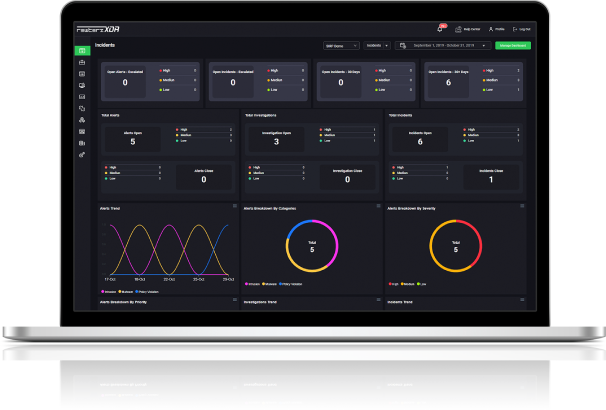

DarkCrystal RAT aka DCRat – Active IOCs
July 17, 2025
Multiple VMware Products Vulnerabilities
July 17, 2025
DarkCrystal RAT aka DCRat – Active IOCs
July 17, 2025
Multiple VMware Products Vulnerabilities
July 17, 2025Severity
High
Analysis Summary
Cobalt Strike first appeared in 2012 in response to alleged flaws in the Metasploit Framework, an existing red team (penetration testing) tool. Cobalt Strike 3.0 was released in 2015 as a stand-alone opponent emulation platform. However, researchers began observing threat actors using Cobalt Strike in 2016. Cobalt Strike's use in hostile activities was previously connected with huge cybercriminal operations like TA3546 and APT40. Two-thirds of detected Cobalt hit efforts from 2016 to 2018 were attributable to well-resourced cybercrime organizations or APT groups, according to researchers.
As a multi-function tool, Cobalt Strike enables attackers to infiltrate networks, gain unauthorized access, and perform various malicious activities. It provides a range of features, including command-and-control (C2) communication, post-exploitation modules, privilege escalation, lateral movement, and the ability to launch sophisticated social engineering campaigns. Its flexibility and comprehensive functionality make it a potent weapon in the hands of attackers.
Cobalt Strike often serves as a dropper or initial infection vector for advanced persistent threats (APTs) and other cybercriminal groups. Attackers commonly use phishing emails, exploit kits, or other means to deliver the malware to targeted systems. Once installed, Cobalt Strike allows the attackers to establish a C2 channel and remotely control the compromised machines, enabling them to execute further malicious activities, exfiltrate data, or deploy additional malware.
Cobalt Strike lets the attacker install a 'Beacon' agent on the target PC which provides the attacker with a plethora of capabilities, including command execution, file transfer, keylogging, mimikatz, port scanning, and privilege escalation. Cobalt Strike includes a toolkit called Artifact Kit that is used to create shellcode loaders.
Researchers discovered a new wave of phishing attacks in September that infected job seekers in the United States and New Zealand with Cobalt Strike beacons. The malware campaign used the lure of a job to infect victims with leaked versions of Cobalt Strike beacons. It was observed that Cobalt Strike is not the only piece of malware used in the attacks. In certain situations, individuals were instead infected with a different type of information-stealing malware known as RedLine or an Amadey botnet executor.
One of the key aspects that make Cobalt Strike a powerful tool is its ability to evade detection by traditional security solutions. It employs obfuscation techniques, encryption, and other evasion mechanisms to bypass antivirus and intrusion detection systems, making it challenging to detect and mitigate. Additionally, Cobalt Strike provides attackers with a user-friendly interface and a wide range of attack vectors, enabling them to customize their campaigns and launch sophisticated attacks with relative ease.
Given its malicious usage, organizations and individuals need to remain vigilant and implement robust security measures to protect against Cobalt Strike attacks. This includes deploying advanced threat detection and prevention solutions, conducting regular security assessments and penetration testing, educating users about phishing and social engineering techniques, and maintaining up-to-date security patches and software updates.
Impact
- Sensitive Data Theft
- Identity Theft
- Financial Loss
Indicators of Compromise
MD5
227ee36709240b082553e39757c224f0
7a4175a60c1fec923e153a602a0b7fa8
27e54557ff821961bd362ed710109af4
e9d405250f7fa101dfe691847b2f3e0c
bd41a6f130188aeb96ab1b0a9686ee20
SHA-256
- 52b4c25520f71a1f83c5cd58b160ac65dce0be32d9edd55ee45b5a436239bbb7
- fb2cb01acbfa8ac86937821738d36684c4ad482179894d16b7b9270f20af32cd
- 02a565f3c21e49619dadce6984700e86959ee4313868eb5abe4269ee07dfb8de
- 6313bf9e6efd0fcfb424146ff487186f05046b923a40f621582ef44b4ac151a3
- 2357e2052e8a55e29f70bae32ec3dcab3687d0b660db5d1ecaaa33e8edb183ef
SHA1
- a61562d45df742f792b67799978ee2e70a15a907
- 62f95b54d4482610c1767c97561f93a39574c9a6
- 24081dc3e6654b38b881dcf0695421d01d6e8382
- 2fbea262d1684beee348a5a853b205dbcca8b412
- 2b76c85698993616dd256decacba2f1ca691b415
Remediation
- Block all threat indicators at your respective controls.
- Search for indicators of compromise (IOCs) in your environment utilizing your respective security controls.
- Emails from unknown senders should always be treated with caution. Never trust or open links and attachments received from unknown sources/senders.
- Maintain cyber hygiene by updating your anti-virus software and implementing a patch management lifecycle.
- Patch and upgrade any platforms and software timely and make it into a standard security policy. Prioritize patching known exploited vulnerabilities and zero-days.
- Enable antivirus and anti-malware software and update signature definitions on time. Using multi-layered protection is necessary to secure vulnerable assets.








